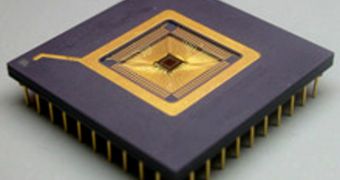Scientists at the Wake Forest University and the University of Southern California announce the development of the first-ever memory prosthetic device. The instrument can be used to restore some of the brain's lost functions, and also to improve the retention of short-term memories.
Thus far, the device has only been used on lab mice, and human trials are still years away. Yet, the experts say that the basic operating principles have been demonstrated. They add that there is great hope the implants could be adapted for humans as well.
Experts at the two universities say that the brains of mice are oftentimes used as proxies for studying the human brain, which means that there is a great chance devices developed for their brains will work on ours as well.
One of the most significant implications of this amazing breakthrough is the fact that the complex code which governs the structure of the brain can indeed be broken down, analyzed, interpreted and reproduced in a way that is useful to humans.
In this particular study, experts used this ability to create a method of enhancing cognitive function, but other applications are also opened for exploration, Technology Review reports. The new implant consists solely of a tiny chip and a set of 32 electrodes.
According to its creators, it represents a perfect combination of math and neurosciences. In lab studies, rats were able to use the implant to a limited extent, in the sense that they were able to recall which of the levers they had pressed in an experiment.
However, the device's capabilities will be extended in future versions. In the end, the joint teams want to produce a means of helping millions of people suffering from stroke, various forms of dementia – including Alzheimer's and Parkinson's – as well as other types of brain damage.
The new work was led by WFU neurophysiologist Samuel Deadwyler, who worked closely together with USC biomedical engineer and neuroscientist Theodore Berger.
“It's an exciting demonstration of the capabilities that we have now, not of only reading neuronal activity of the brain but also manipulating it,” Charles Wilson comments.
“Hopefully, this could be clinically useful in the future,” adds the University of California in Los Angeles (UCLA ) neuroscientist and emeritus professor, who was not a part of the new study.
“We already have the technology and capability to record and stimulate a single neuron in humans; the ingredients are already there. And the fact that it could be done in animals suggests to me that a similar thing could be done in humans,” Wilson concludes.

 14 DAY TRIAL //
14 DAY TRIAL //